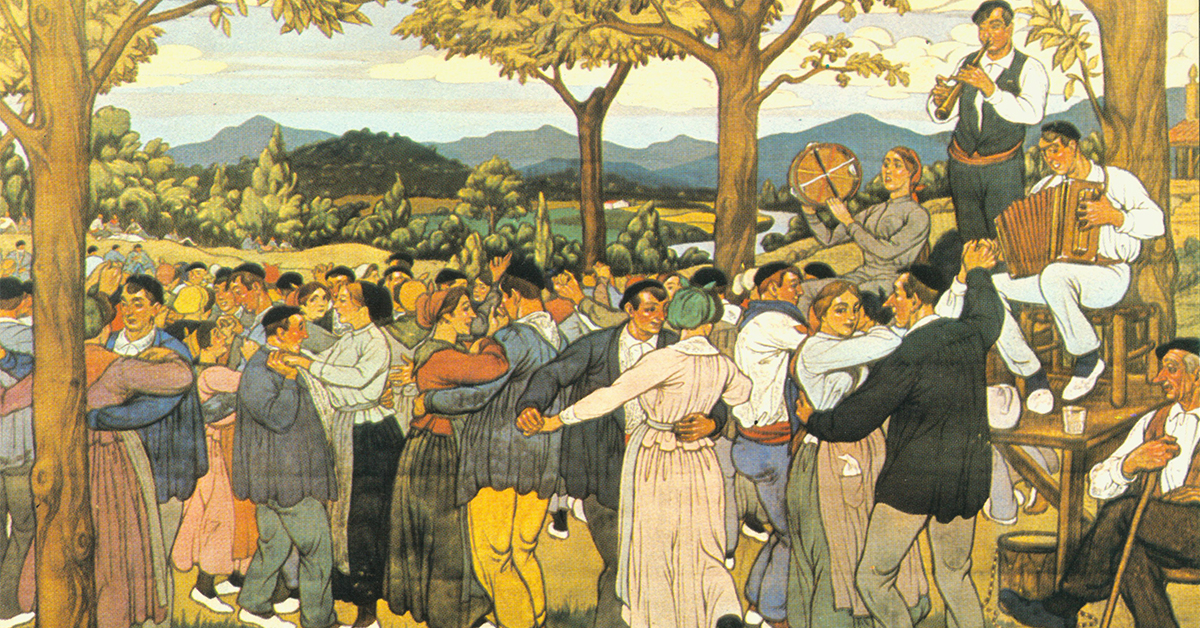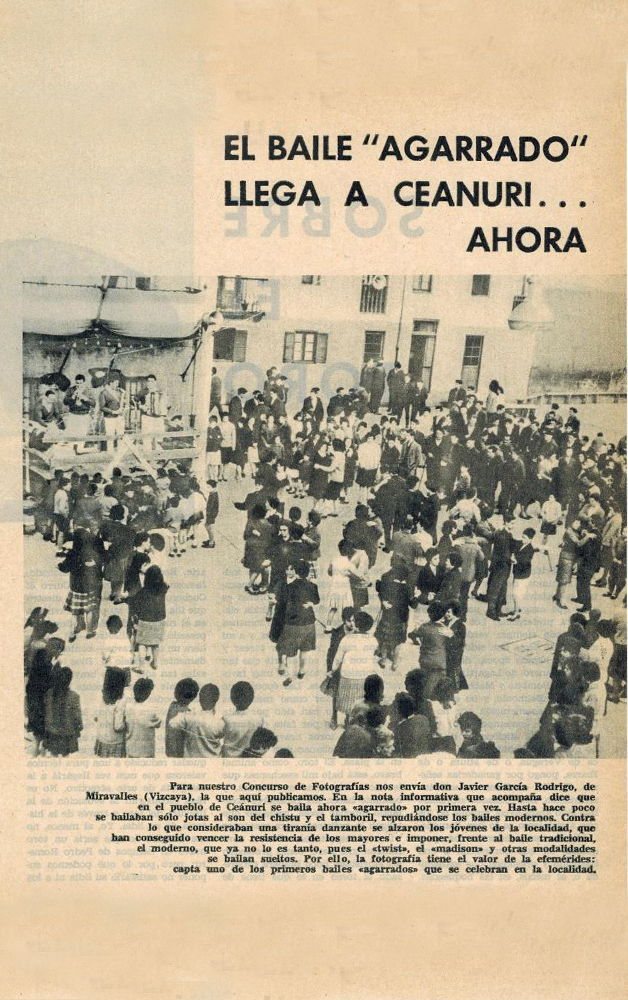Basque ethnography at a glance

Postcard entitled “Romeria-Erromeria” (Pilgrimage festivities), illustrated by the painter José Arrue.
Summer is the time of festivities and dancing is part of those celebrations. Even though few dancers are seen in the town squares today, it was not so long ago that people wanted to dance, but were banned from doing so “in hold” or waltzing as it was also known.
During the Basque Festivities organised in Areatza-Villaro (Bizkaia) in 1897, J. Larrea, the chronicler for El Nervión newspaper, wrote the following on 12 September: “… and as regards the social mores of Arratia, they cannot be overemphasized enough; suffice it to say that waltzing was forbidden during the open-air festivities as part of the pilgrimage in Arteaga (Artea), and it is the same case in this charter town, as the “mutilleks” (young men) were not allowed to hold the “neskatillaks” (young women) in their arms to dance to the sound of the drum”.
Although this ban gradually was lifted in the majority of the municipalities of Arratia over time, that was not the case in Zeanuri (Bizkaia). Dancing in hold was forbidden there until 1963. On 30 July 1943, the Mayor of Zeanuri released a statement that said: “Only the traditional drum will be allowed to enliven the festivities and the so-called dancing “in hold” is banned; the only dancing allowed is the so-called open position, in other words, to the flute and drum, which is the only form that has been used in this district since time immemorial”.
The ecclesiastical authorities, in the same way as the civil one, took a hardline against the waltz.
The older people of Zeanuri still remember this song against dancing in hold that they sang as children:
Jantzara mutilak
Itxi baltseo zikina!
Aurrera neskatxak
Ohitura garbiakaz
Aupa mutilak!
Gora neskatxak!
Zuen ohitura onakaz
Zapaldu beti
Jantza nahastua
Zorakeri guztiakaz
Dance young men / Forget the sleezy waltz. / Come on young women / with clean living. / Come on young men / And young women too / with your good mores. / Always trample on / the dance that / is a really folly.
That situation led to unrest, embarrassment and disquiet among the young people of Zeanuri, who had to travel to other municipalities of Arratia, particularly to the pilgrimage and its festivities that was held in Artea every Sunday, to dance in each other’s arms.
What happened on St. Ignatius’s Feast Day in Gorbeia is significant: people could only dance in open position to the sound of the flute and drum in Igiriñao, which came under Zeanuri. Yet, in Sastegi, under Orozko, they could waltz to the sound of the accordion, and many people from Zeanuri would flock there.
In the early 1960s, the civil and religious authorities, under pressure from the young people, started to relax their objection to the waltz; in the 1962 Andra Mari festivities, a group of young people contracted the accordion player Oromino, and organised a “parallel pilgrimage” to be able to dance in hold. When they passed the txapela beret around to collect the money to pay the accordion player, Maurizio Larrakoetxea, a Carmelite monk, put some in and said: “If it is not a sin in other towns, it is not here either”.
The Nervión Orchestra was on the 1963 Andra Mari programme of festivities. That marked the end of the ban on dancing in hold in Zeanuri.
Jon Urutxurtu


